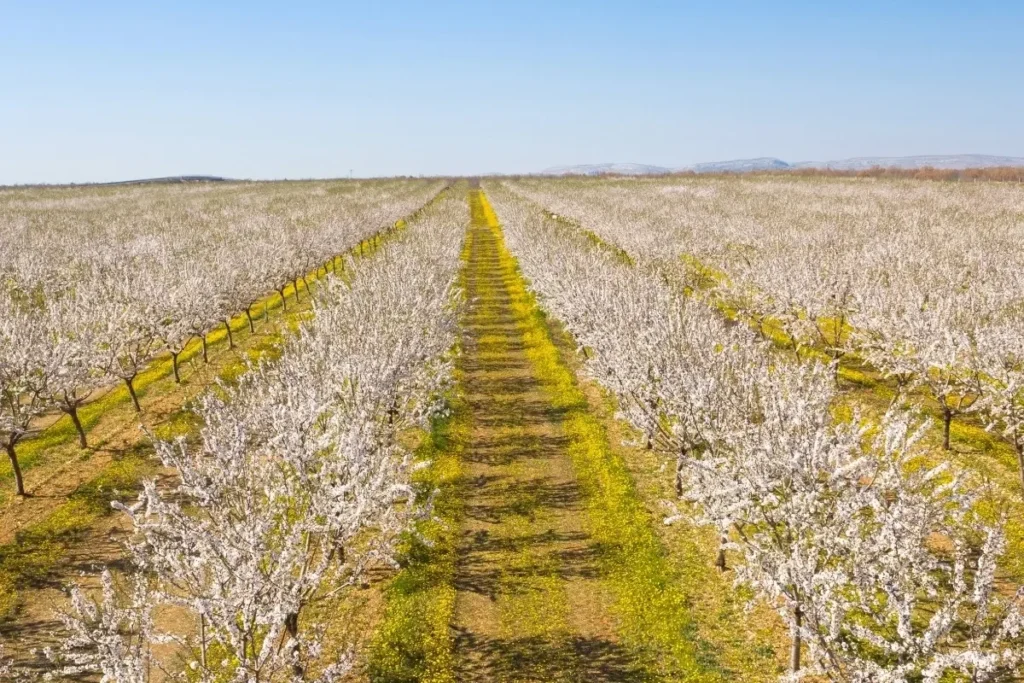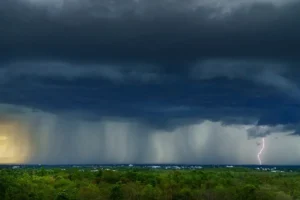Introduction
The Sustainable Groundwater Management Act (SGMA), signed into law by Governor Jerry Brown in September 2014, marks a transformative shift in California’s approach to managing its groundwater resources. As the most comprehensive groundwater legislation in the state’s history, SGMA establishes a framework for the sustainable management of groundwater basins, which are crucial for California’s water supply, particularly during periods of drought.
Groundwater is a vital resource in California, accounting for nearly 40% of the state’s total water supply in an average year and up to 60% during droughts. It supports agriculture, urban areas, and natural ecosystems, making its sustainable management critical for the state’s economic and environmental well-being. Historically, California’s groundwater was largely unregulated, leading to significant issues such as over-extraction, land subsidence, and deteriorating water quality.
SGMA addresses these challenges by mandating the formation of local Groundwater Sustainability Agencies (GSAs) tasked with developing and implementing Groundwater Sustainability Plans (GSPs). These plans are designed to bring groundwater basins into sustainable yield over a 20-year period, ensuring long-term water security and resilience against the impacts of climate change and population growth.
The Need for SGMA
California’s need to implement the Sustainable Groundwater Management Act (SGMA) arose from a confluence of environmental, economic, and social factors.
Excessive Groundwater Extraction
For decades, California relied heavily on groundwater to meet its agricultural, industrial, and urban water demands. This reliance intensified during periods of drought when surface water supplies dwindled, leading to unsustainable levels of groundwater extraction. Over time, this practice resulted in chronic overdraft in many of the state’s groundwater basins, where water was being pumped out faster than it could naturally be replenished.
Land Subsidence
Excessive groundwater pumping caused significant land subsidence in various parts of California, particularly in the Central Valley. Subsidence occurs when the ground sinks due to the removal of water from underground aquifers, causing the land above to collapse. This phenomenon damaged infrastructure such as roads, bridges, and canals, leading to costly repairs and long-term structural issues.
Contamination of Groundwater
As groundwater levels declined, the concentration of contaminants in the remaining water often increased. This included naturally occurring substances like arsenic and man-made pollutants from agricultural runoff and industrial processes. The degradation of water quality posed serious health risks and complicated the treatment and use of groundwater for drinking and irrigation.
Saltwater Intrusion
In coastal regions, such as the Salinas Valley and parts of Southern California, over-pumping of groundwater led to saltwater intrusion. This occurs when the natural barrier between freshwater aquifers and seawater is compromised, allowing saltwater to seep into and contaminate freshwater supplies. Saltwater intrusion rendered significant portions of groundwater unusable for agriculture and potable uses.
Harm to Ecosystems
Many of California’s rivers, wetlands, and ecosystems depend on groundwater for their health and stability. Overdrafting groundwater disrupted these ecosystems, affecting wildlife habitats, reducing stream flows, and damaging wetlands. The depletion of groundwater resources led to the decline of plant and animal species that relied on consistent groundwater levels.
Agricultural Impacts
California’s agriculture industry, a cornerstone of the state’s economy, heavily relies on groundwater, especially during dry years. Groundwater overdraft threatened the long-term viability of this industry, risking significant economic losses, reduced crop yields, and the livelihoods of farmers and agricultural workers.
Lack of Comprehensive Management
Before SGMA, California did not have a comprehensive statewide framework for managing groundwater resources. Groundwater management was largely left to local jurisdictions, resulting in a patchwork of regulations and approaches that were often insufficient to address the scale of the problems. This lack of coordinated management led to fragmented and often ineffective efforts to control groundwater extraction and ensure sustainability.
Need for Long-Term Planning
SGMA introduced a long-term planning approach to groundwater management, requiring local agencies to develop and implement Groundwater Sustainability Plans (GSPs) aimed at achieving sustainable groundwater conditions within 20 years. This long-term perspective was essential to address the chronic issues of overdraft and ensure the resilience of groundwater supplies for future generations.
Key Provisions of SGMA
1. Formation of Groundwater Sustainability Agencies (GSAs)
SGMA emphasizes local control, allowing agencies with existing authority over water management (such as counties, cities, and water districts) to form Groundwater Sustainability Agencies (GSAs). GSAs are typically formed through collaborations among multiple local agencies and stakeholders. This ensures that various interests, including those of agricultural users, urban water suppliers, environmental groups, and disadvantaged communities, are represented in the decision-making process.
2. Development of Groundwater Sustainability Plans (GSPs)
Each GSA must develop a Groundwater Sustainability Plan (GSP) that includes a thorough assessment of the groundwater basin, covering its physical characteristics, historical and current conditions, and patterns of groundwater use.
In addition, GSPs must define measurable objectives for achieving sustainability and minimum thresholds for various sustainability indicators such as groundwater levels, water quality, land subsidence, and surface water depletion. These metrics are used to evaluate progress and ensure that the basin moves toward sustainable conditions.
Finally, GSPs must outline specific actions and projects to achieve sustainability goals. These might include groundwater recharge projects, water conservation programs, changes in water allocation policies, and infrastructure improvements.
3. Sustainability Indicators and Criteria
SGMA identifies six key sustainability indicators that must be monitored and managed:
- Chronic lowering of groundwater levels
- Reduction of groundwater storage
- Seawater intrusion
- Degraded water quality
- Land subsidence
- Depletion of interconnected surface water
4. Timelines and Deadlines
SGMA established a timeline for the formation of GSAs and the development of GSPs:
- By June 30, 2017: Formation of GSAs.
- By January 31, 2020: Submission of GSPs for critically overdrafted basins.
- By January 31, 2022: Submission of GSPs for high- and medium-priority basins.
SGMA requires all basins to achieve groundwater sustainability by 2040 (or 2042 for some basins). GSAs must show significant progress in the interim and provide annual reports on their activities and progress toward sustainability.
5. Monitoring and Reporting
GSAs are responsible for collecting and managing data on groundwater conditions. This involves regular monitoring of groundwater levels, quality, and other sustainability indicators. In addition, GSAs must submit annual reports to the California Department of Water Resources (DWR) detailing groundwater conditions, implementation of the GSP, and progress toward sustainability goals.
6. State Oversight and Enforcement
The Department of Water Resources (DWR) reviews and evaluates GSPs to ensure they meet SGMA’s requirements. The department provides guidance, technical support, and financial assistance to GSAs. If a GSA fails to develop an adequate GSP or fails to implement it effectively, the State Water Resources Control Board (SWRCB) has the authority to intervene. This may include designating the basin as probationary and imposing interim measures until the local agencies can resume control.
7. Financial Assistance and Funding
SGMA provides for state funding to support the development and implementation of GSPs. This includes grants and loans for planning, monitoring, and infrastructure projects. GSAs have the authority to generate funds locally through fees, assessments, or other mechanisms to support their groundwater management activities.
8. Public Participation and Transparency
SGMA mandates extensive public participation throughout the development and implementation of GSPs. GSAs must engage with all stakeholders, including the public, through meetings, workshops, and comment periods. GSPs and annual reports must be made publicly available, ensuring transparency and accountability in groundwater management.
Case Studies of SGMA in Action
To understand SGMA’s impact, here are some case studies highlighting successful implementation and innovative practices.
Kings Basin
The Kings Basin, located in the Central Valley, is one of California’s critically overdrafted basins. The Kings Basin Water Authority, a coalition of local agencies, developed a GSP focusing on enhanced groundwater recharge and conservation by using strategies such as:
- Recharge Projects: The basin has implemented several recharge projects, including dedicated recharge basins and using floodwater to replenish groundwater.
- Efficient Irrigation: Farmers are adopting more efficient irrigation techniques, such as drip irrigation, to reduce water use.
These efforts have led to measurable improvements in groundwater levels and a more resilient water supply system.
Salinas Valley Basin
The Salinas Valley Basin, another critically overdrafted basin, has taken a collaborative approach to groundwater management. The Salinas Valley Basin Groundwater Sustainability Agency (SVBGSA) includes representatives from agriculture, municipalities, and environmental groups, and uses strategies that include:
- Conservation Incentives: The SVBGSA offers incentives for water conservation practices, such as soil moisture sensors and cover cropping.
- Stakeholder Engagement: Regular workshops and meetings ensure all stakeholders are involved in decision-making processes.
Enhanced stakeholder collaboration has led to broad support for the GSP and a shared commitment to sustainability.
Consequences of SGMA Violations
As of 2024, several groundwater subbasins in California have faced fines and probationary status due to violations of the Sustainable Groundwater Management Act (SGMA) regulations. This intervention by the State Water Resources Control Board is part of the state’s effort to ensure long-term groundwater sustainability.
Subbasins on Probation
- Tulare Lake Subbasin (Kings County)
- Tule Subbasin (Tulare County)
- Kaweah Subbasin
- Kern County Subbasin
- Delta-Mendota Subbasin
- Chowchilla Subbasin
These subbasins have been scheduled for probationary hearings throughout 2024 due to deficiencies in their Groundwater Sustainability Plans (GSPs) or lack of significant progress towards sustainability goals. The State Water Board has expressed particular concern about the potential impacts of groundwater overdraft in these areas, including threats to drinking water supplies and land subsidence that could damage infrastructure (Mavens Notebook) (California Agriculture News Today) .
Reasons for Probation
- Inadequate Groundwater Sustainability Plans (GSPs): The GSPs submitted by these basins did not meet SGMA’s requirements for ensuring sustainable groundwater management.
- Failure to Address Overdraft: These subbasins are critically overdrafted, meaning that the rate of groundwater extraction significantly exceeds the rate of replenishment, leading to severe depletion of groundwater reserves.
- Urgent Environmental and Social Impacts: The affected basins face urgent issues such as risks to drinking water supplies, land subsidence, and negative impacts on ecosystems and agricultural productivity.
State Intervention Process
During the probationary period, the State Water Board will work closely with the Groundwater Sustainability Agencies (GSAs) responsible for these basins to rectify the deficiencies in their GSPs. This process includes:
- Reporting Requirements: Groundwater extractors in probationary basins must report their water usage and may be subjected to additional monitoring measures like installing meters.
- Public Participation: Probationary hearings and related activities are conducted with robust public participation to ensure transparency and gather input from local stakeholders.
- Opportunity for Correction: GSAs can update their GSPs before and during the probationary period to address identified deficiencies and avoid further penalties.
The overall goal of these interventions is to bring the basins back on track towards achieving groundwater sustainability by the mandated deadlines. For more detailed information on the probationary status of specific basins and the SGMA implementation process, you can visit the State Water Resources Control Board’s website (California Agriculture News Today) .
The future of SGMA
As SGMA moves into its implementation phase, the focus will be on monitoring progress and adapting strategies as needed. The lessons learned from early adopters will be invaluable for other basins. Additionally, ongoing research and technological advancements will play a crucial role in achieving and maintaining groundwater sustainability.
Adapting to Climate Change
Climate change poses significant challenges for groundwater management, including more frequent and severe droughts. SGMA’s flexible framework allows for adaptation to changing conditions, ensuring long-term sustainability.
Enhancing Public Awareness
Public awareness and engagement are critical for SGMA’s success. Educating communities about the importance of groundwater and sustainable practices can foster broader support and participation.
Strengthening Policy and Regulation
Continued refinement of policies and regulations will be necessary to address emerging challenges and ensure effective enforcement. This includes integrating SGMA with other water management initiatives and policies at the state and federal levels.
Conclusion
The Sustainable Groundwater Management Act represents a bold and necessary step towards securing California’s water future. By fostering local control, encouraging innovation, and promoting sustainable practices, SGMA aims to restore and protect groundwater resources for generations to come. While challenges remain, the collaborative and adaptive approach embodied in SGMA offers a promising path forward. As stakeholders continue to work together, California can serve as a model for sustainable groundwater management worldwide.
Sources: Maven’s Notebook, California Agriculture News Today




